90km Vasto to San Severo (Regio Tratturo)
Molise
Ride overivew
So we’ve had the mountains of the Gran Sasso and the vineyards of Chieti and today the scene changes to the rolling hills of grass and grain in Molise. It’s another tough day and one with many pleasures. There’s a big landscape to ride through where people are few. Towns are rare, ruins of old farms common. You’ll have the red kites for company along with the buzzards floating in the air above you as you ride. For some it will be a lonesome day, when the landscape makes one feel very small, but it’s grand and uplifting too. After 90km of fields and hills, the day ends in San Severo, a little Baroque gem in the heart of the Tavoliere di Puglia.
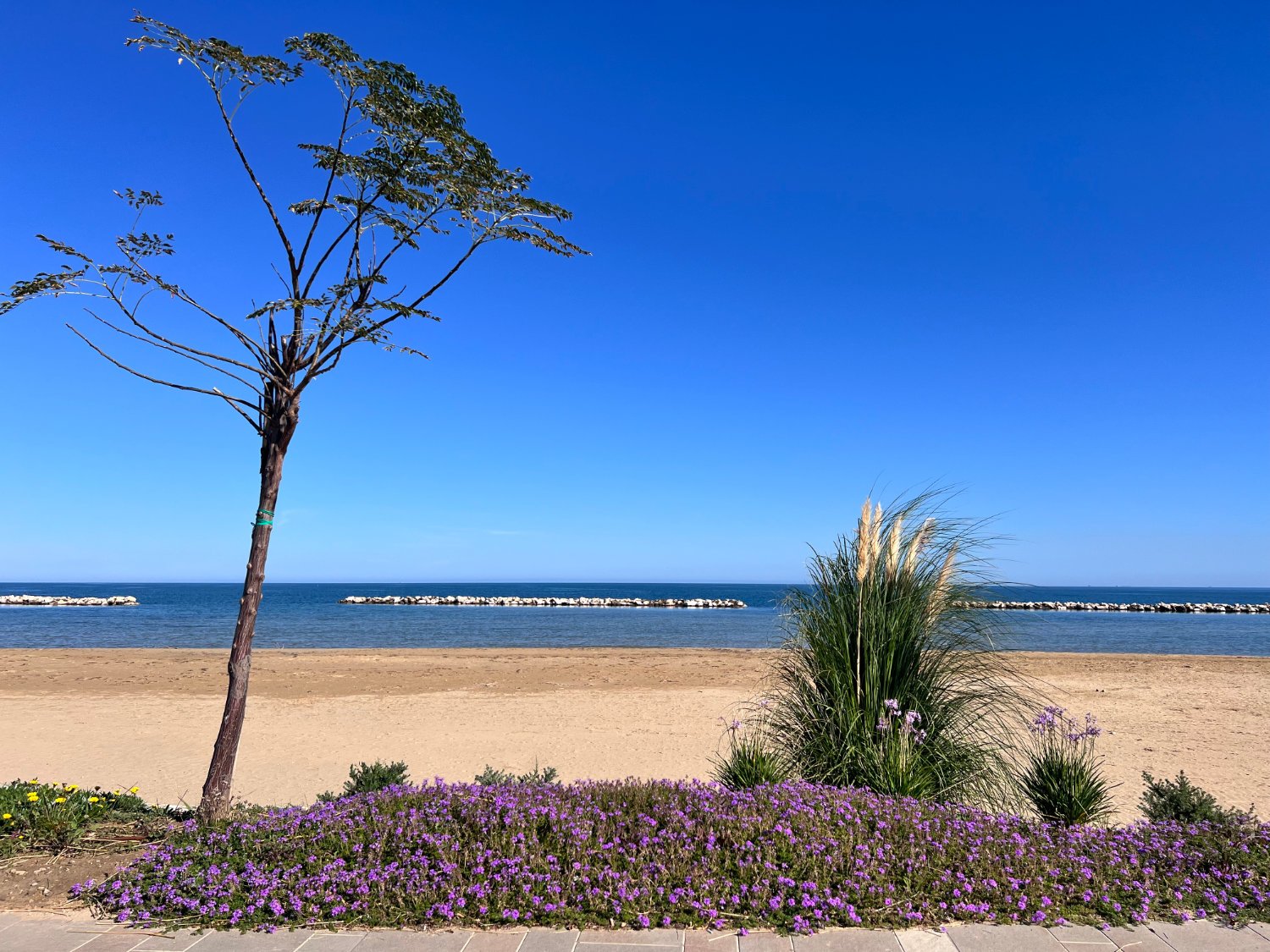
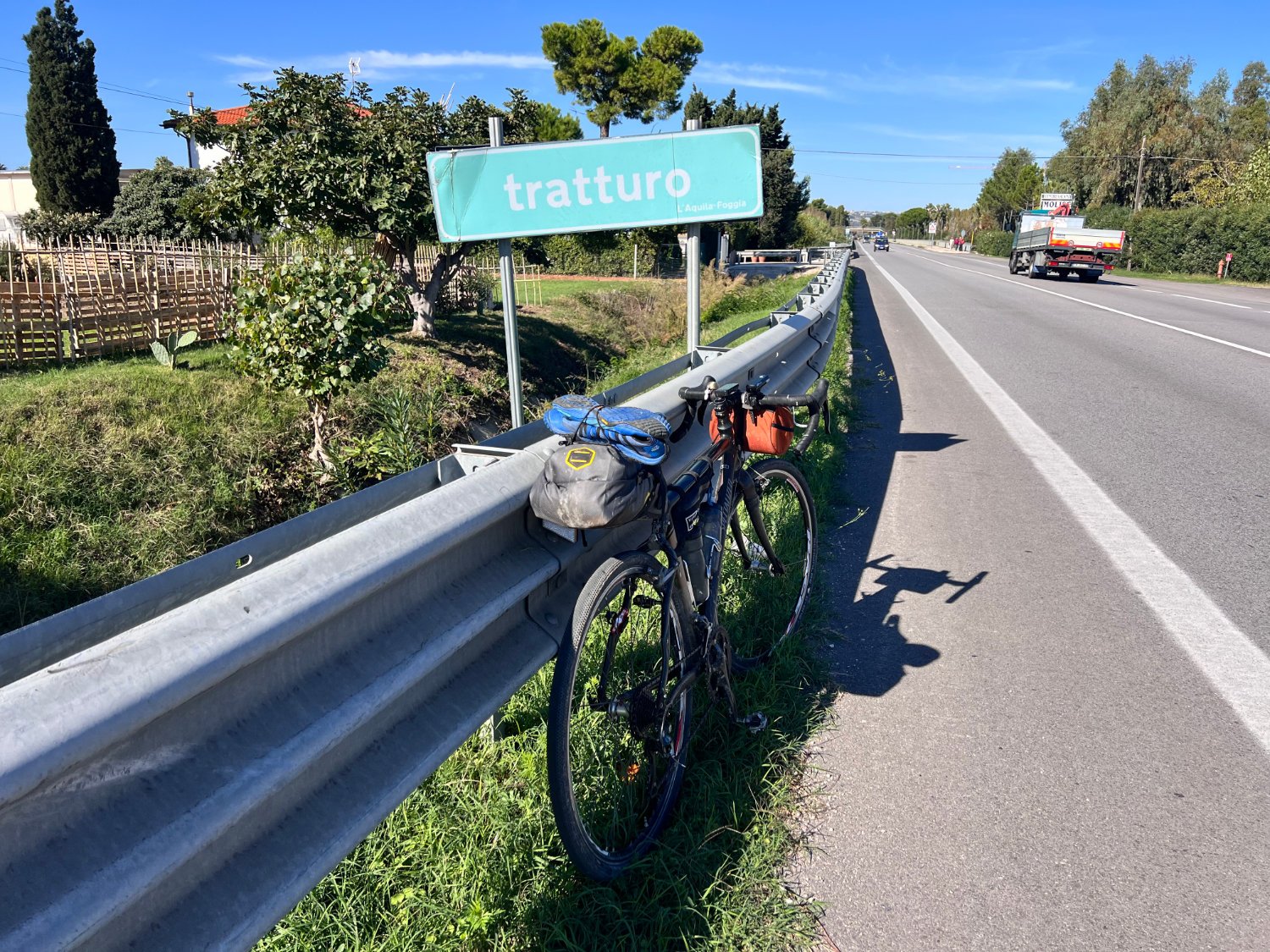
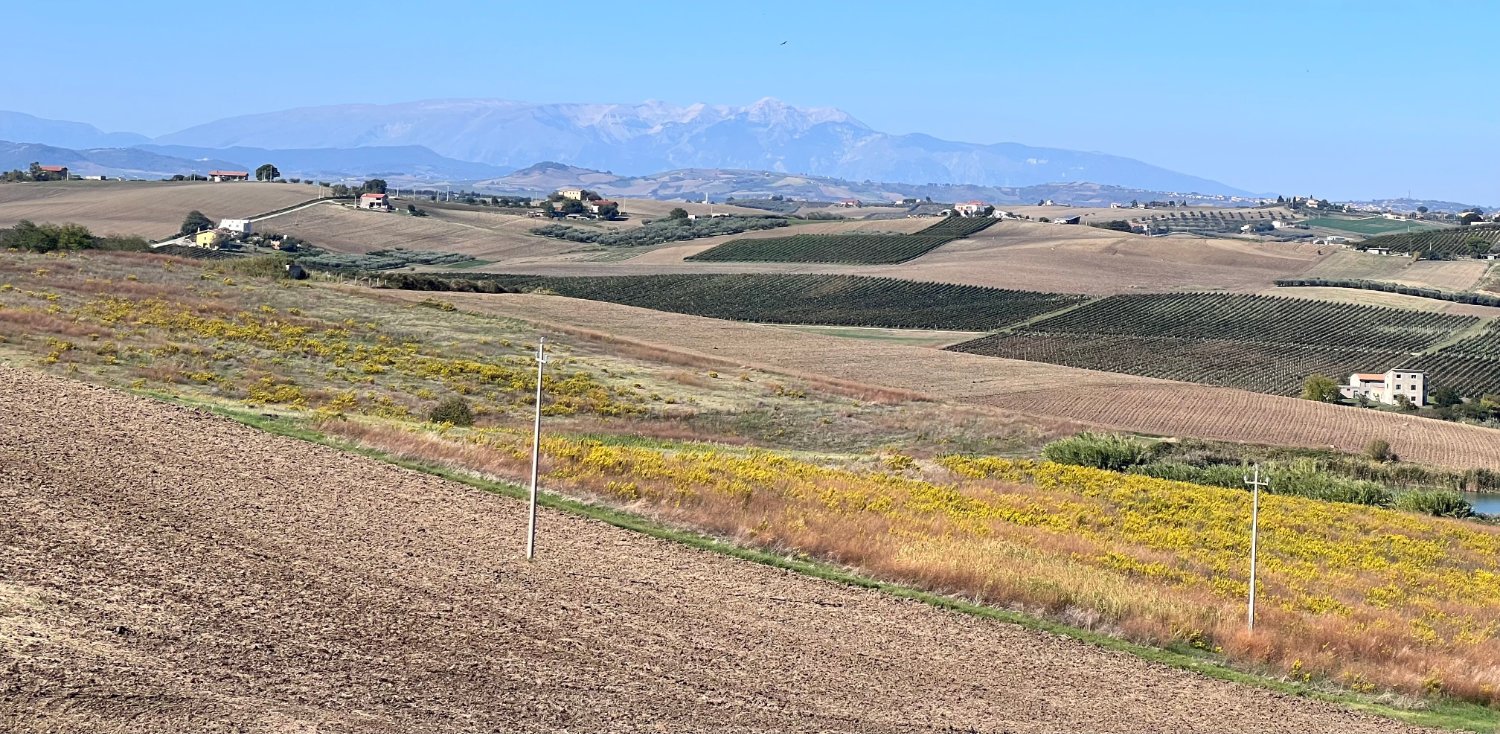
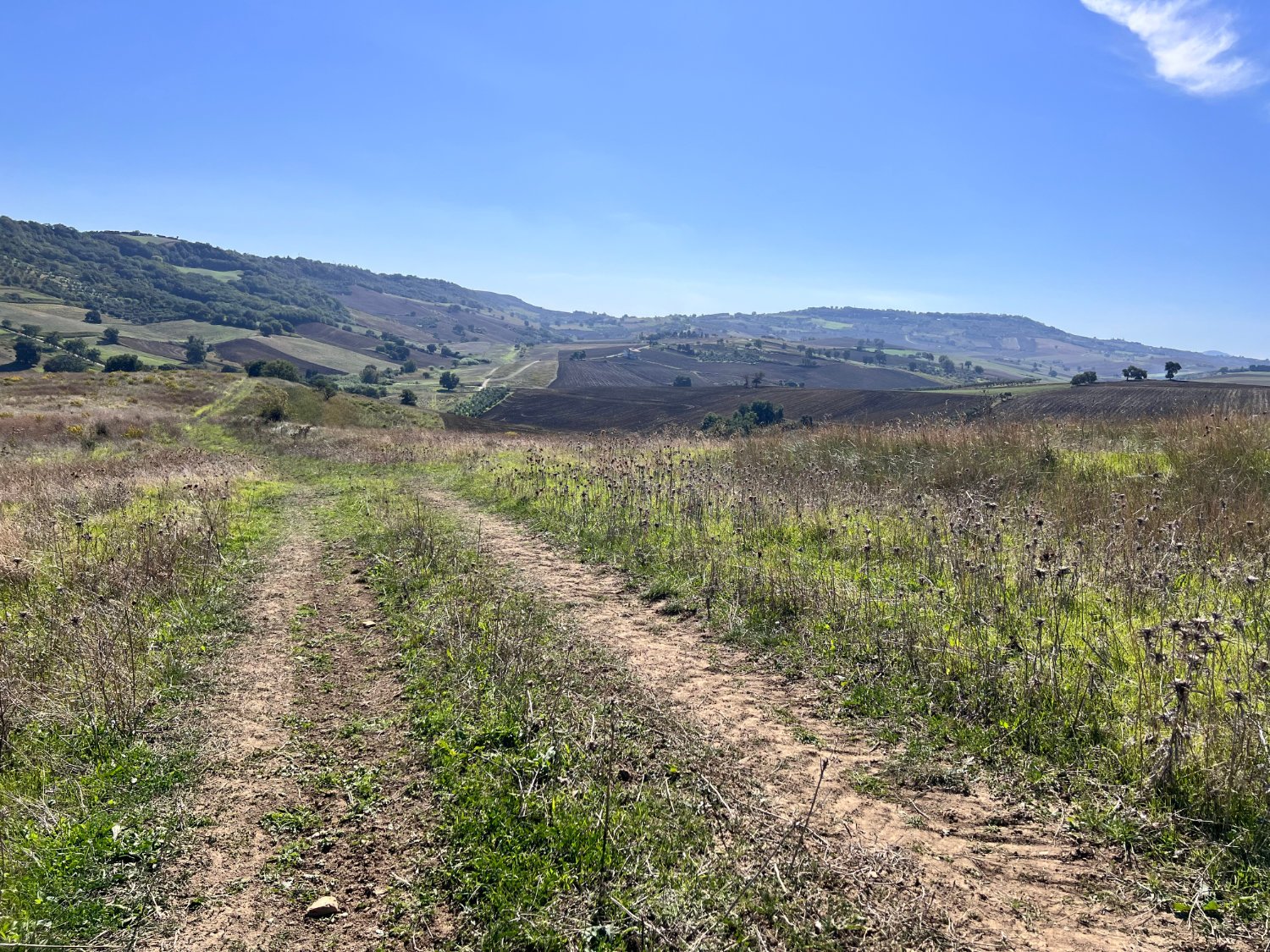
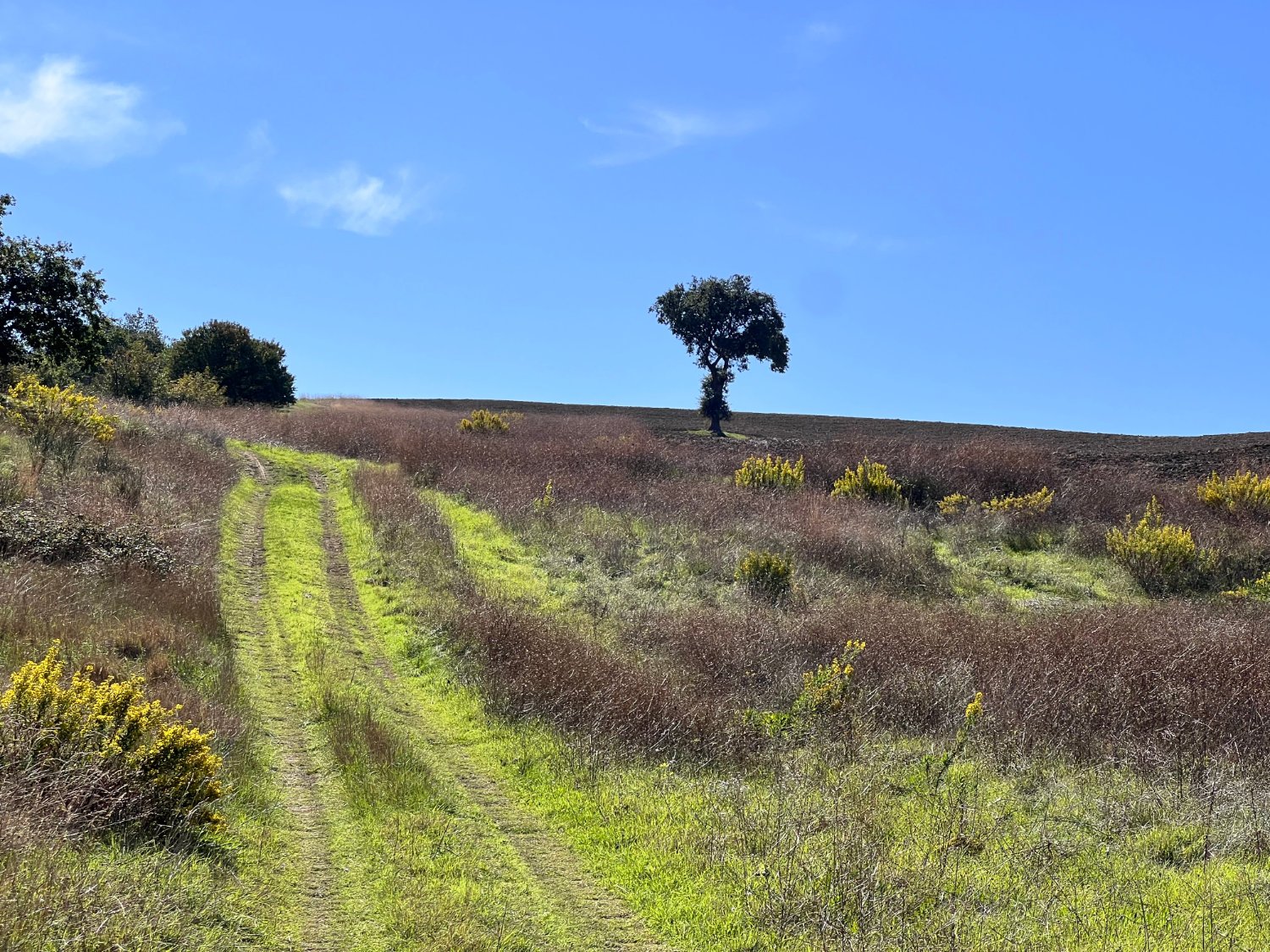

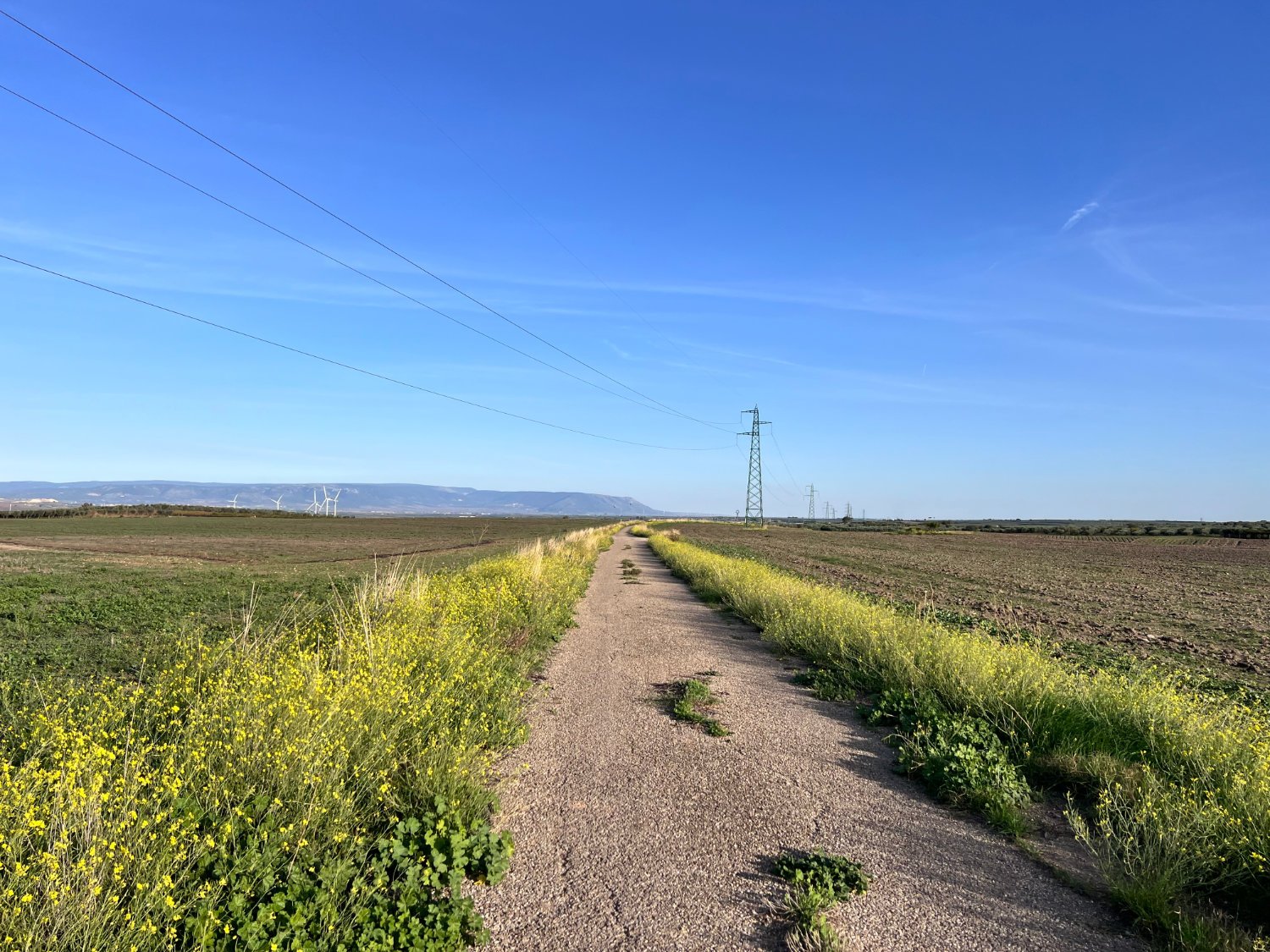

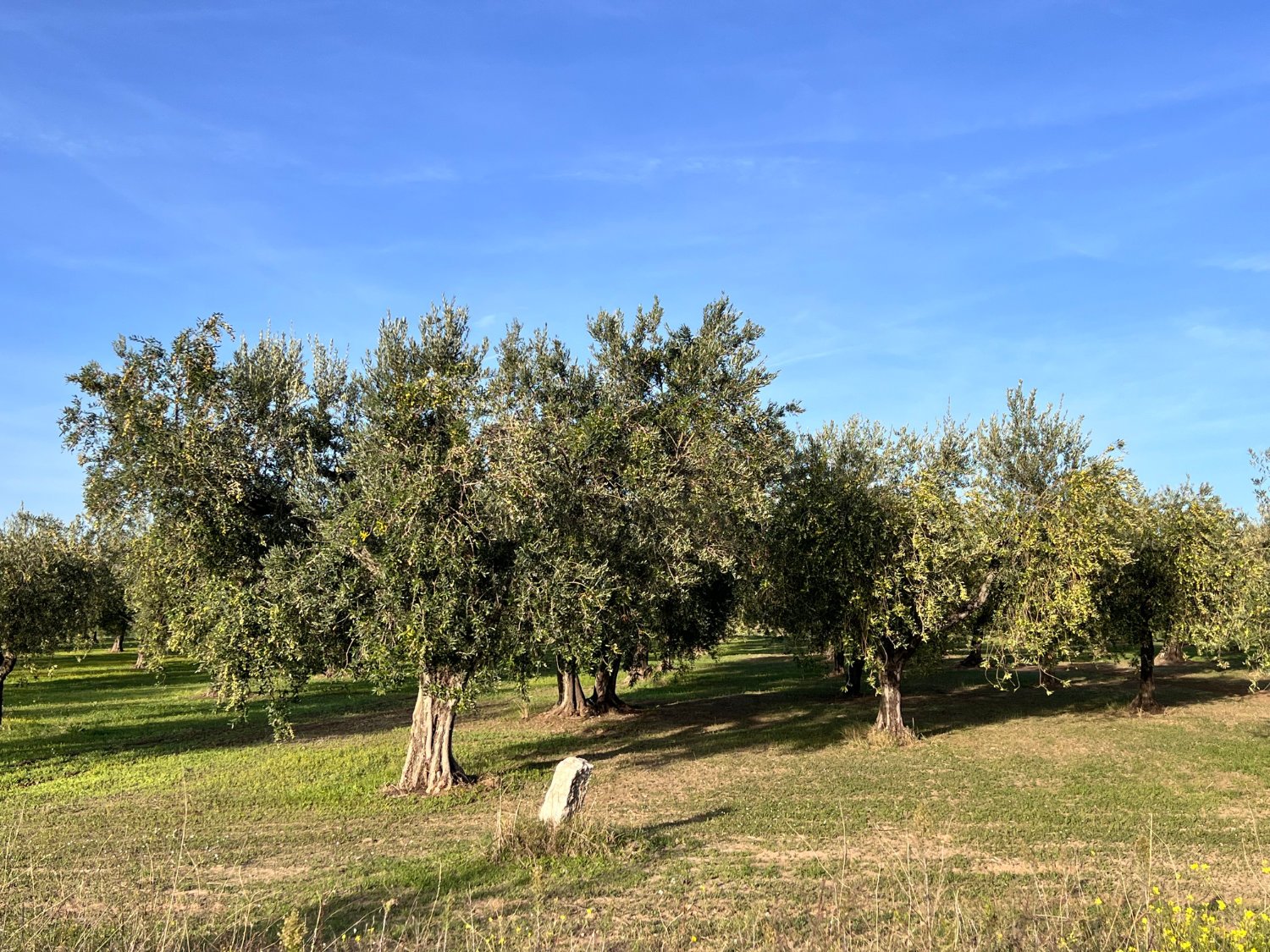
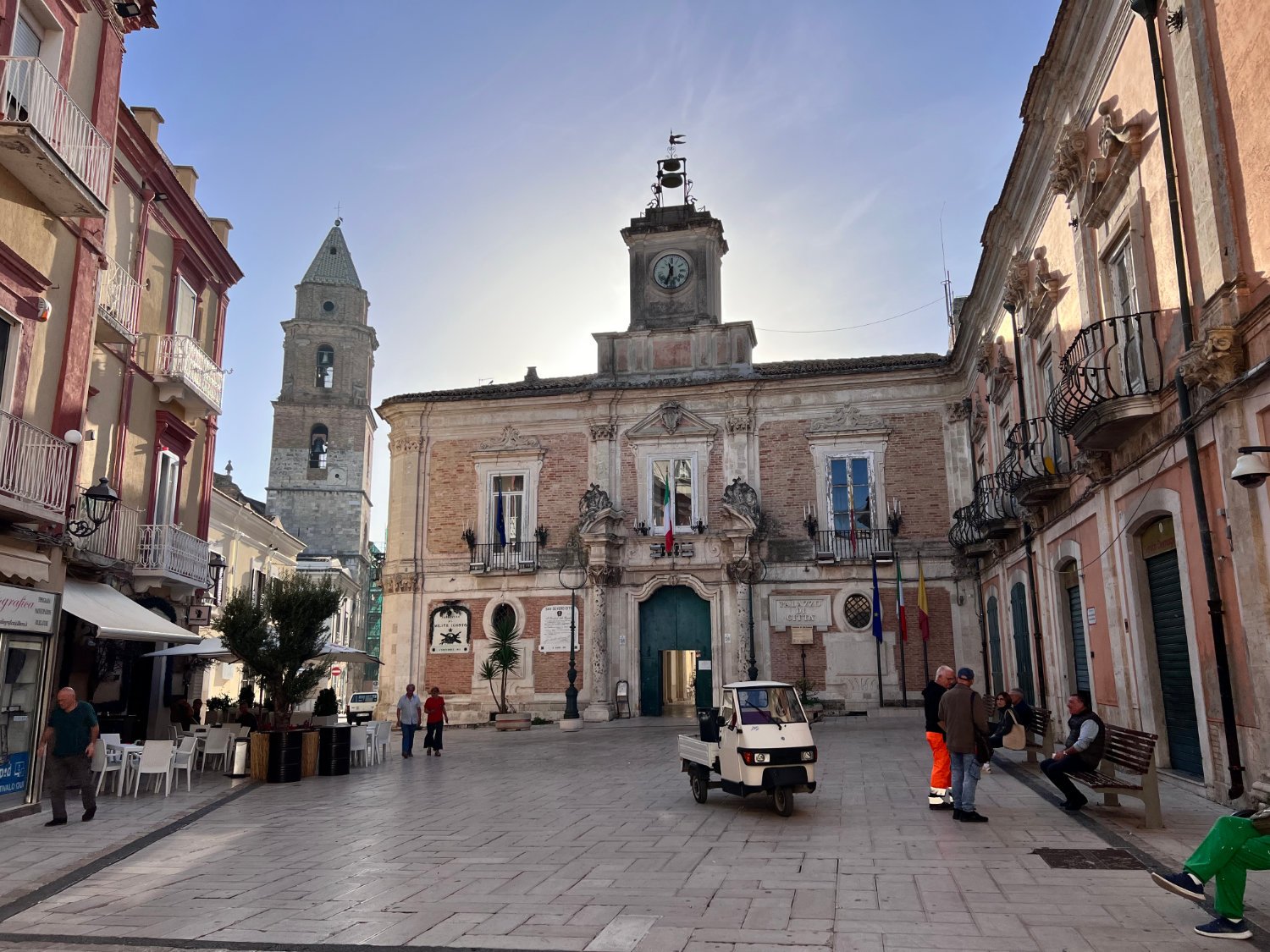
Ride practicalities
START/FINISH: Vasto/San Severo DISTANCE: 90km TOTAL ASCENT: 1500m TERRAIN AND SURFACES: The majority of the ride is off-road on farm tracks most of which are firm and rideable. There’s some hike-a-bike but nothing like Day 2. Queit rural roads. RECOMMENDED ACCOMMODATION*: Nothing to recommend RECOMMENDED FOOD/DRINK: Vasto; Il Piccolo Bistro, San Martino in Pensilis; Hotel Santolanni, S. Severo; La Fossa di Grano MAINLINE TRAIN SERVICES: Vasto San Salvo, San Severo LINKS TO OTHER RIDES:
*Only places which meet WMWG criteria are listed. For other suggestions use your preferred App, e.g. Booking.com etc
Ride notes
Other than a dry pastry, perhaps a cornetto and a coffee, Italians don’t do breakfast until around 11.00 when they might stop for collazione secondo, a second breakfast. So to begin the day with pancakes and/or scrambled eggs and bacon is a rare treat indeed. Make the most of what Piccolo Bistro offers for eating options on the whole of today’s route are rare and always require a deviation from the route. From centro storico, of Vasto, follow the route down the hill to re-join the cycle track, the Via Verde. It winds its way through the cooling shade of trees, before re-joining the tratturo, which has now transformed itself into a main road, the SS16, known as the Adriatica. However, for the first time, there is a formal recognition that this is the historical tratturo. So proud are the local commune, that they have erected road signs every few hundred metres carrying the same message, but have yet to erect anything useful, such as a sign by a junction along the way. The road is busy and there is a hard shoulder to ride in. The tratturo carries on for a few more kilometres on the SS16, but this route heads of the main road and up into the hills. The road winds and bends and a panoramas of sea and rolling hills opens up around you. Behind you is the distant Maiella mountain, from where many of the sheep would have come. The view would have been the last the shepherds would have seen of their mountain home for the next six months. Beyond the village of Petacciato, the tratturo is rejoined, it having in true tratturo style, headed straight up this 250m hill in one straight line from the main road.
Via Verde
Cars are rare on this beautiful road, fly-tipping sadly not. Quite why southern Italians shame themselves with this horrendous activity is a mystery. There are woods and fields and scattered homes. After 7km of gentle asphalt riding, you’re back onto the tracks. In general they are very rideable, the views are extensive. Navigating is not a challenge; from each hilltop, you’ll see the route ahead, rising and falling over the hills. The climbs are much more manageable than they were yesterday, until that is you arrive on the Strada del colle di Rutia. This mean little road has large stones which slip and roll under the tyres.
tratturo regno magno
Food and drink stops are rarities on this section of the tratturo. Unless you are living as close to the lives of the old shepherds as possible on this trip by sleeping out under the stars on nothing more than a sheepskin, existing on a diet of old bread and sheep’s cheese, you’ll need to head up to a hilltop town for sustenance. San Martino in Pensilis comes at around half way through the day, and the Hotel Santolanni has restaurant. The town is island surrounded by a sea of fields, which made it an ideal sanctuary for Albanians who were forced to flee their homeland in the 15th century. They are known today as the Arbëreshë people and have kept their culture as well as their language both of which are protected by Italian Law.
Regio Tratturo
If you’ve headed up to town for lunch/supplies, zip back down the hill and re-join the tratturo. The route ahead is unmistakably clear; a long straight track leads down through fields into the valley below, crosses it and climbs the far hill. The horizons are wider, the sky broader, the fields of grain larger, the olive groves fewer than anything we’ve seen on this trip so far. It is as different from the enfolding vineyards of yesterday as it is possible to be. There are plenty of abandoned farmhouses, some of considerable size. They make for a haunting site and melancholy one.
Crossing the river Saccione in the valley, you leave Molise and enter Apulia. Road surfaces disintegrate down a further notch or two. The valley road is rough and narrow, full of pot holes and empty of vehicles other than the occasional old banger full of Africans who have been working in the fields. Around about was a battle between the invading Normans and the local tribes (the Normans won and settled in the area for over 200 years). A stone marks the spot where Pope Leone IX stood and watched the carnage. To leave the valley floor, the tratturo turns at ninety degrees from the road and heads directly up a hill on what was once a road but which has been brutalised by natural forces. Tarmac and concrete protrude at odd angles, and in places has been totally swept aside. Nothing on the ride so far has had this sense of total surrender to the grander forces of nature. You are forced to walk the bike until you’re up onto the plain above.
Once up the hill, you have arrived on the edge of the Tavoliere di Puglia, the second widest plain in Italy. Huge fields, followed by more olive tree than you could ever dream of seeing are to accompany you for the next 11km. Once the plain was grassland protected by law expressly for the flock’s use. The tratturo is again clearly marked by stones, the track wide and very rideable. It is for all its tens of thousands of olive trees, an empty land. Little goes on other than the silent growing of the trees. The only hazard are vagrant dogs who might be caught napping by your sudden and silent approach. They will be quick into action, snarling, barking and chasing. Although this is alarming, they only want to have you off their patch and they soon tire and peace is restored. Avoid eye contact, keep your voice calm, press onwards.
San Severo
There are 11km of this track riding straight and easily through the olive plantations. Then, as you approach S. Severo, the tratturo morphs into a busy road on which you ride the last 4km town. Having been entirely rebuilt after the July 30 1627 earthquake, San Severo is the RT’s baroque jewel; shiny limestone- slabbed streets, plaster trills and frills on the edifices of houses and churches. Some neglect and decay add to the odd beauty. Despite being, historically as well as today, an important stopping place for pilgrims on the Via Francigena as well as a notable commercial centre for the surrounding farms, good accommodation is in short supply. The Fossa del Grano is a reasonable place to try.
Every route on this website has been carefully researched as well as ridden. However situations on the ground can change quickly. If you know of changes to this route, or cafes, pubs and the like which you think other cyclists need to know about, feel free to share your thoughts below.
If you enjoyed this guide, why not subscribe to the website so as not to miss other inspirational routes?
wheremywheelsgo.uk is a Feedspot UK Cycling top website






